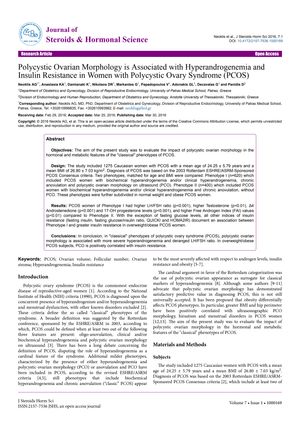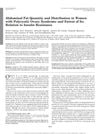Polycystic Ovarian Morphology Is Associated with Hyperandrogenemia and Insulin Resistance in Women with Polycystic Ovary Syndrome
January 2016
in “
Journal of Steroids & Hormonal Science
”

TLDR Women with PCOS and polycystic ovaries have higher male hormone levels and more insulin resistance, especially if they are overweight.
In the 2016 study involving 1,275 Caucasian women with PCOS, researchers found that those with polycystic ovarian morphology (Phenotype I) had significantly higher levels of luteinizing hormone, testosterone, androstenedione, and 17-OH progesterone, as well as a higher Free Androgen Index compared to those without this morphology (Phenotype II). Additionally, overweight/obese women with PCOS and polycystic ovarian morphology exhibited greater insulin resistance than those without the morphology. The study concluded that polycystic ovarian morphology is associated with more severe hyperandrogenemia and insulin resistance, particularly in overweight/obese women with PCOS.

